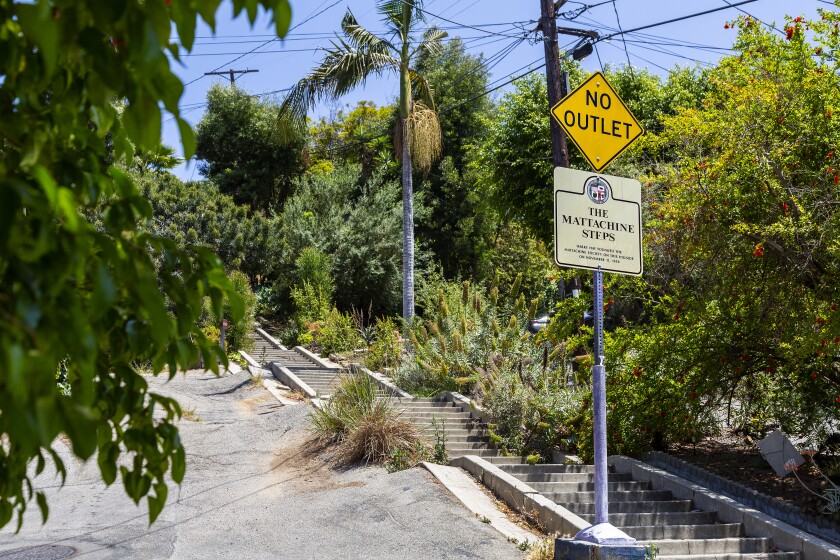While Pride is celebrated each June to mark the anniversary of the Stonewall Riots in New York City, take some time to appreciate the rich history of LGBTQ activism in Los Angeles.
We’ve selected 20 landmarks across the city that highlight the work Angelenos have done for decades to fight for the right to exist, to love and to live in peace.
Some locations no longer exist as they once did, but the memory of what happened in these important places has been preserved in books, documents, photographs and first-person accounts.
Take, for example, Cooper Do-Nuts, a long-gone 24-hour cafe in downtown Los Angeles where a group of queer people rebelled against police harassment by throwing coffee cups and stirring straws at LAPD officers attempting to make arrests.
The undertold story of that May 1959 uprising was one of several gaps that prompted Lillian Faderman and Stuart Timmons to write their 2009 book, “Gay L. A.: A History of Sexual Outlaws, Power Politics, and Lipstick Lesbians.”

The Mattachine Steps on Cove Avenue in Silver Lake near the former home of early gay activist Harry Hay.
(Ricardo DeAratanha / Los Angeles Times)
“We discovered that, historically, more lesbian and gay institutions started in Los Angeles than anywhere else on the planet, and that L.A.'s multifaceted, multiracial, and multicultural lesbian and gay activism continues to have tremendous impact worldwide,” they wrote.
Today, Los Angeles’ LGBTQ history is being preserved by organizations such as the ONE National Gay & Lesbian Archives at the USC Libraries and the June L. Mazer Lesbian Archives in West Hollywood (both of which are on our list).
“L.A. is one of those places where things can happen that can’t always happen somewhere else,” said Angela Brinskele, director of communications at the Mazer archives.
For Brinskele, maintaining queer history in Los Angeles is about making sure the next generations know that there were others before them and have a sense of the history of the gay rights movement.
“Even today, depending on where you live in the world and what kind of family or religion you’re brought up in, you can still think you’re the only queer person in the world,” she said. “A big principle that we live by is we’re not going to let our history be made to disappear.”
It is with that sentiment that we’ve compiled this initial list of landmarks and points of interest. It is, we know from the outset, far from exhaustive. However, it is a starting point and a list we hope to add to so that the city’s rich LGBTQ history — and the local places where it has been made — never disappear.
from Lifestyle https://ift.tt/3fYkgQF
via IFTTT

comment 0 Comment
more_vert